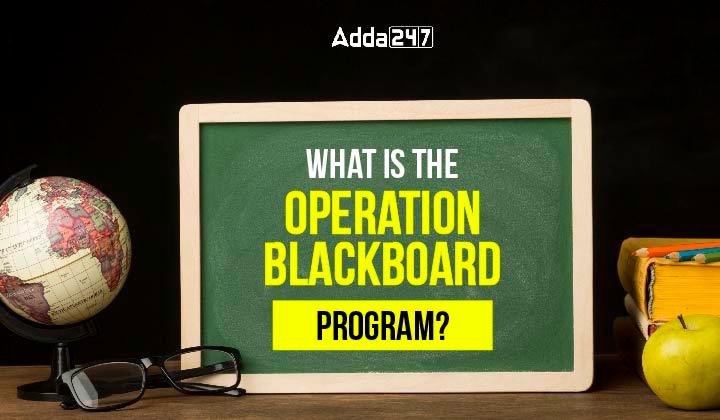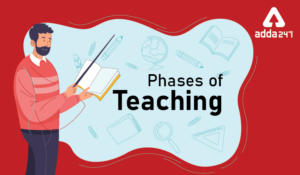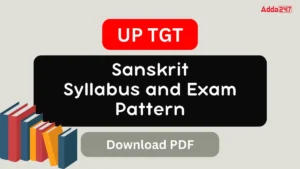Table of Contents
In 1987, India launched the Operation Blackboard Program with the aim of improving the quality of elementary education, increasing children’s retention in schools, and adopting a child-centered approach to education. The program recognized the urgent need to enhance the infrastructure and quality of education in rural and underprivileged areas.
Operation Blackboard objectives included providing essential facilities such as classrooms, libraries, drinking water, and toilets, as well as introducing innovative teaching methods, teacher training, and instructional materials. The initiative with the plate number 1 had similar goals of improving education quality and increasing the retention of children in schools.
What is the Operation Blackboard Program?
Operation Blackboard scheme aimed to improve both the quality and quantity of primary education. The scheme was implemented by the state government with full financial assistance (100%) from the central government. The central government covered the entire cost of the operation.
- The scheme intended to include all primary schools that existed as of September 30, 1986, under its purview.
- Operation Blackboard introduced minimum criteria for a primary school, including having two rooms, two teachers (one of them preferably female), and a set of essential teaching-learning aids (TLA).
- The Teaching Learning Aids (TLA) provided included science kit, maths kit, tool kit, 45 charts, maps, children’s books, balls, and a blackboard.
- Under Operation Blackboard, it is proposed to ensure certain minimum facilities in every primary school in the country. These include: Two reasonable large rooms which are usable in all weather conditions, To provide teaching-learning equipment to all primary schools and Continuation of ongoing Operation Blackboard to cover all the remaining primary schools especially those in SC/ST areas.
UGC NET Study Notes for Paper 1, Download PDF
Operation Blackboard Program – Overview
Launched in 1987, the Operation Blackboard Program is still being financed by the federal government. The newly modified plan and what it attempts to achieve have been given below:
- There should be at least one room and one teacher in each section.
- Make sure to include amenities like a library and other crucial pieces of equipment.
- Bathrooms for boys and girls that are separate.
- The SC/ST areas need to receive special consideration.
- The central government will pay the teachers’ salaries and the money needed for the necessary equipment.
Operation Blackboard Program Aims
The Operation Blackboard scheme, initiated in 1987-88, has a primary objective of gradually equipping all primary schools across the country with essential facilities. Initially, the focus was on providing two teachers and Teaching Learning Equipment (TLE) to these schools. Over time, the scheme has been expanded to include a third teacher and an additional room for primary schools with an enrolment of over 100 students.
Operation Blackboard Scheme:
- Started: 1987-88
- Main Goal: Equip all primary schools in India with basic facilities.
Initial Focus:
- Provide each primary school with:
- Two teachers
- Teaching Learning Equipment (TLE)
Expansion Over Time:
- Added a third teacher for primary schools with over 100 students.
- Provided an additional classroom for these larger primary schools.
- From 1993-94, included Upper Primary schools in the scheme.
Financial Support:
- Offers 100% central assistance for:
- Purchasing Teaching Learning Equipment (TLE)
- Paying teacher salaries during the Plan period in which they were hired.
Purpose: Ensure all schools have the necessary resources and staff to provide quality education.
Operation Blackboard – Objectives
The Operation Blackboard Program seeks to enhance both the qualitative and quantitative aspects of primary education. It was developed on the premise that a better learning environment will elevate the enrolment, retention, and achievement rates of primary school children. Read below to understand the objectives of the program:
- The federal government fully supports the state’s implementation of the strategy.
- All costs associated with the operation will be covered by the central government.
- All elementary schools open as of September 30, 1986, were to be included in the Operation Blackboard plan.
- By the year 2000, all schools were meant to be covered under Operation Blackboard, according to subsequent revisions to the scheme’s timetable of events.
- As part of Operation Blackboard, every primary school in the country is required to have a set of minimal amenities.
- The expansion of the teacher population in schools with only one instructor is a key objective of Operation Blackboard.
Operation Blackboard – Measures for Progress
After the implementation of the program, many more measures have been taken to ensure progress and improvement of the already executed plan.
- State governments will provide funding for the replacement of damaged machinery.
- The micro planning process will include Operation Blackboard in its entirety.
- At least 50% of the hired teachers must be female in order to have a beneficial effect on the retention and enrollment of girl pupils.
- Teachers will be trained to use the Operation Blackboard teaching resources with the aid of specially created training sessions for them.
Failures of Operation Blackboard
- Delayed Supply of Educational Material: The educational materials meant to be supplied to schools were often delayed, resulting in a significant setback to the implementation of the scheme. Reasons cited for the delay included increased material costs, insufficient grants, non-availability of materials, and lack of transport facilities.
- Poor Quality of Charts: The adoption of charts as an educational aid faced challenges in a textbook-oriented culture. The municipal corporation responsible for supplying charts failed to provide them or provided low-quality ones, hampering their effectiveness in the teaching process.
- Inadequate Training and Useless Tools: Teachers were not adequately trained on the proper use and purpose of certain teaching tools like science boxes, mathematics boxes, and musical instruments. This lack of training rendered some tools useless as teachers lacked the knowledge to utilize them effectively.
- Insufficient Training Period: The training period provided to teachers, especially those in tribal areas, was deemed too short to fully grasp the complexities of their changing role. The lack of subsequent revisions further contributed to forgetting essential aspects of teaching, and the training failed to address the daily challenges faced by teachers.
- Lack of Repair Grants: There were no provisions for additional grants to repair the supplied materials, leading to further issues as damaged or non-functional teaching aids were not promptly fixed.
- Teacher Shortages and Inadequate Training: Numerous teaching positions remained vacant, exacerbating the challenges in implementing the scheme effectively. Moreover, the training provided to teachers on subjects like teaching, culture, and physical education was insufficient, affecting the quality of education imparted.
- Non-Educational Duties Assigned to Teachers: Teachers were sometimes burdened with non-educational tasks when they were available at school, diverting their focus from their core teaching responsibilities.
- Incomplete Construction and Lack of Amenities: Some classrooms constructed under the scheme were found to be incomplete, and basic amenities were lacking in about half of the schools, impacting the overall learning environment.
- Lack of Inspection Norms: The absence of fixed norms for inspection and evaluation of the implementation and other aspects of the scheme created inconsistencies in monitoring, with no clear guidelines from the Education Department or District Education Officer.
Benefits of Operation Blackboard Programme
The Operation Blackboard Programme brought several benefits to children in primary schools. Some of the key advantages include:
- Improved Infrastructure: The scheme focused on providing essential facilities like classrooms, clean drinking water, separate toilets for boys and girls, and a conducive learning environment. This created a safer and more comfortable space for children to study and thrive.
- Quality Education: With the introduction of Teaching Learning Equipment (TLE) like science kits, math kits, charts, maps, and children’s books, the program enhanced the quality of education. These aids made learning more interactive, engaging, and practical, promoting a deeper understanding of concepts.
- Trained Teachers: The scheme emphasized teacher training, which empowered educators with better teaching methodologies, instructional techniques, and subject knowledge. Trained teachers could deliver lessons more effectively, catering to the diverse needs of students.
- Reduced Teacher-Student Ratio: By providing two or three teachers per primary school, the program lowered the teacher-student ratio. This allowed teachers to give more personalized attention to each child, leading to improved academic performance.
- Inclusive Education: Operation Blackboard aimed to cover schools in rural and underprivileged areas, ensuring that even marginalized children had access to quality education. This helped bridge the educational divide between urban and rural regions.
- Holistic Development: The scheme’s focus on physical education and cultural activities contributed to the overall development of children. It encouraged extracurricular participation, promoting physical fitness, creativity, and self-expression.
- Enhanced Learning Materials: The provision of teaching aids and books enriched the learning experience. Children had access to a wider range of resources, making learning more interesting and enjoyable.
- Encouragement of Learning by Doing: With the introduction of practical learning aids like science and math kits, children were encouraged to learn through hands-on experiences. This fostered curiosity, critical thinking, and problem-solving skills.
- Higher Enrolment and Retention: The improved facilities and teaching standards attracted more children to schools, leading to increased enrolment. Additionally, the program’s focus on a conducive learning environment contributed to better student retention rates.
- Preparation for Upper Primary: By covering Upper Primary schools, the scheme facilitated a smooth transition for students from primary to upper primary education, ensuring continuity in their educational journey.
Overall, the Operation Blackboard Programme positively impacted children’s education by providing them with better infrastructure, resources, and trained teachers, fostering an environment conducive to learning and overall development.




 Phases of Teaching - Stages of Teaching ...
Phases of Teaching - Stages of Teaching ...
 स्वर व व्यंजन - �...
स्वर व व्यंजन - �...
 UP TGT Sanskrit Syllabus and Exam Patter...
UP TGT Sanskrit Syllabus and Exam Patter...




